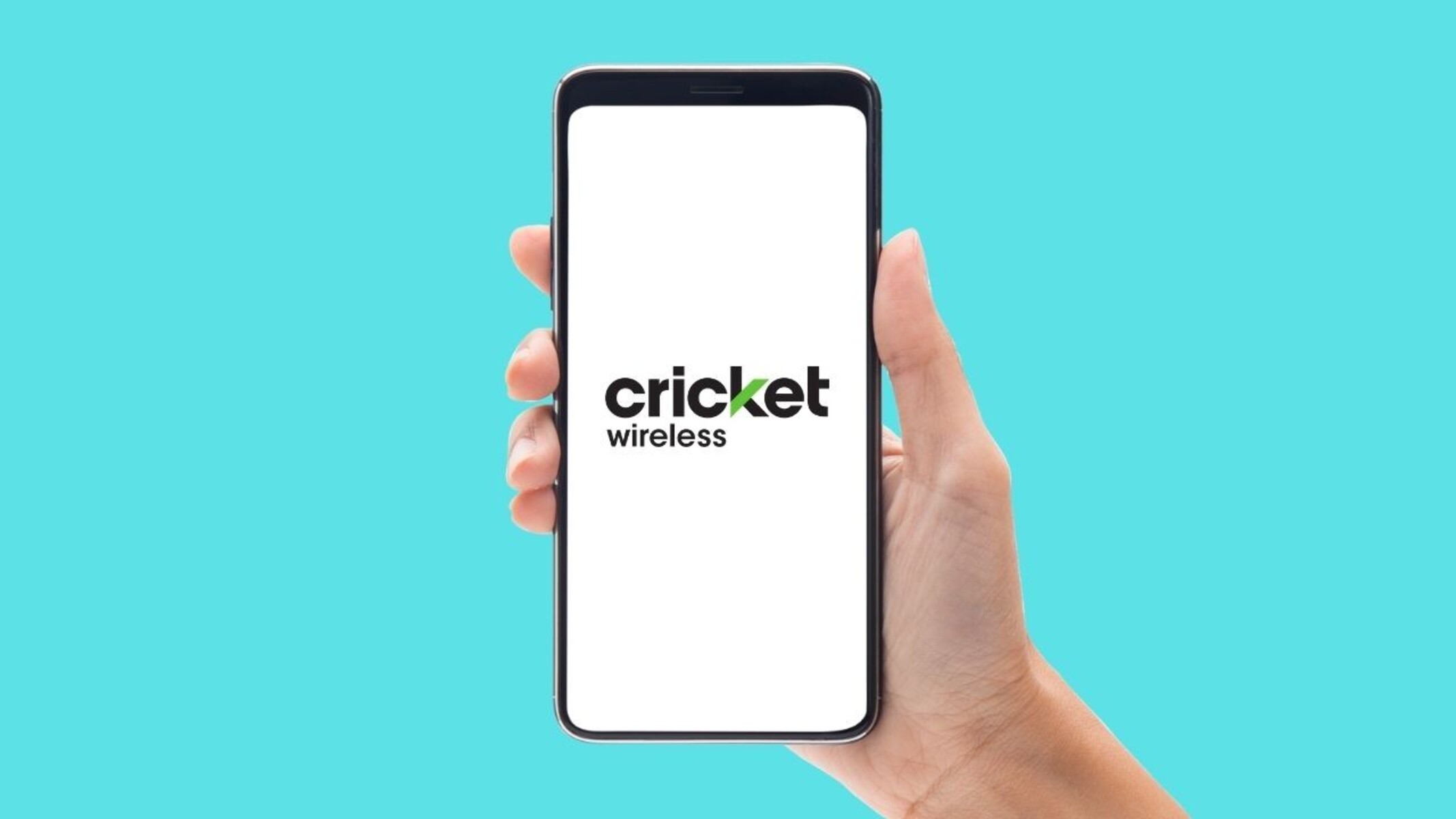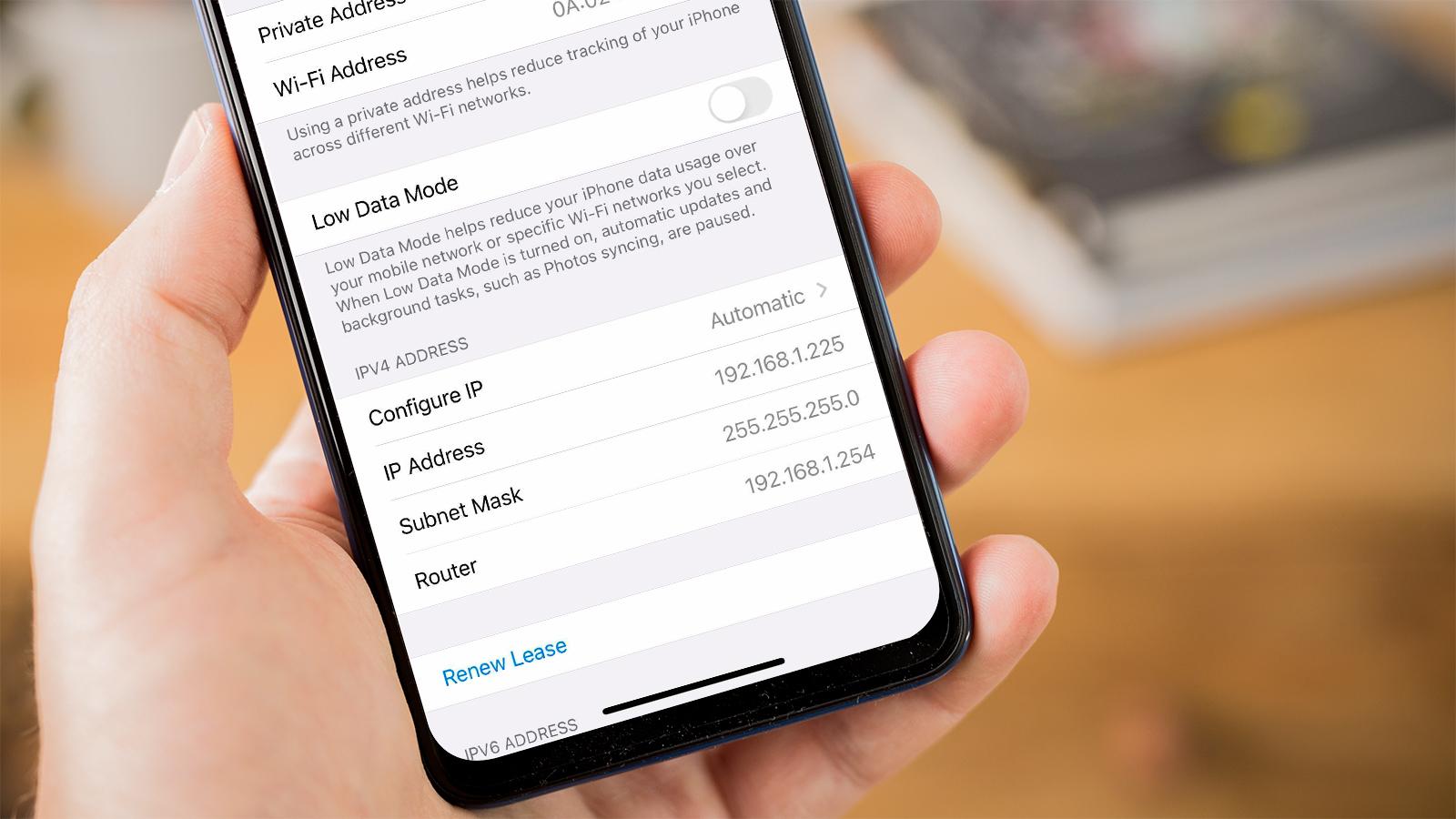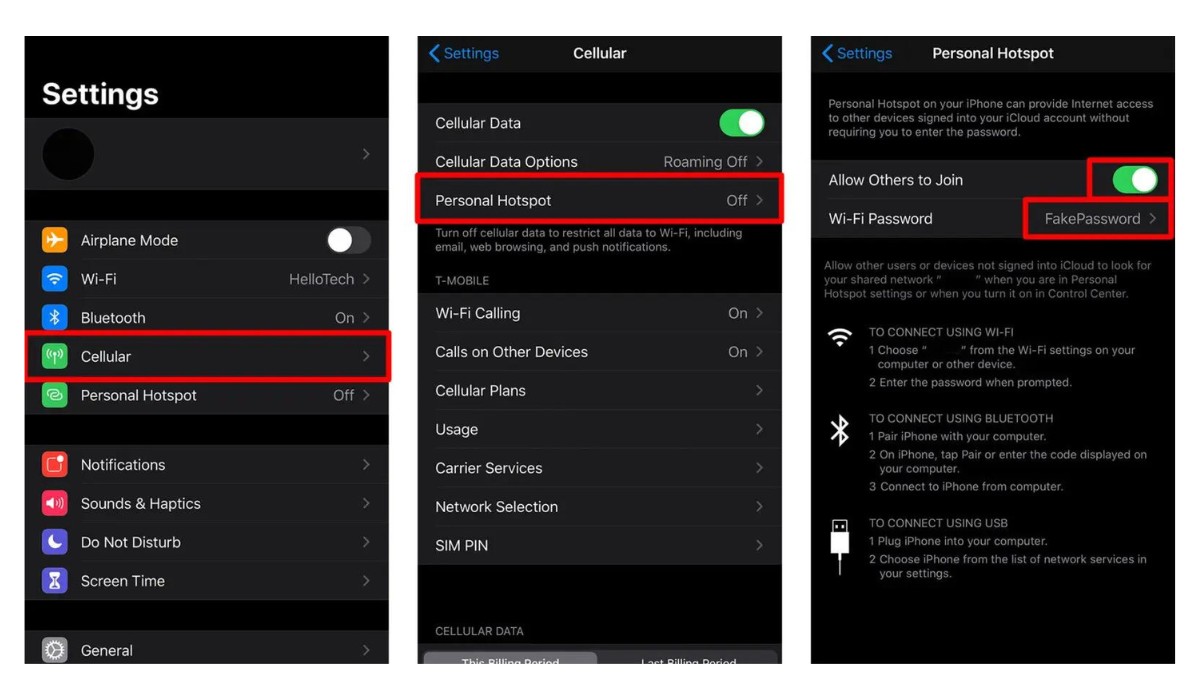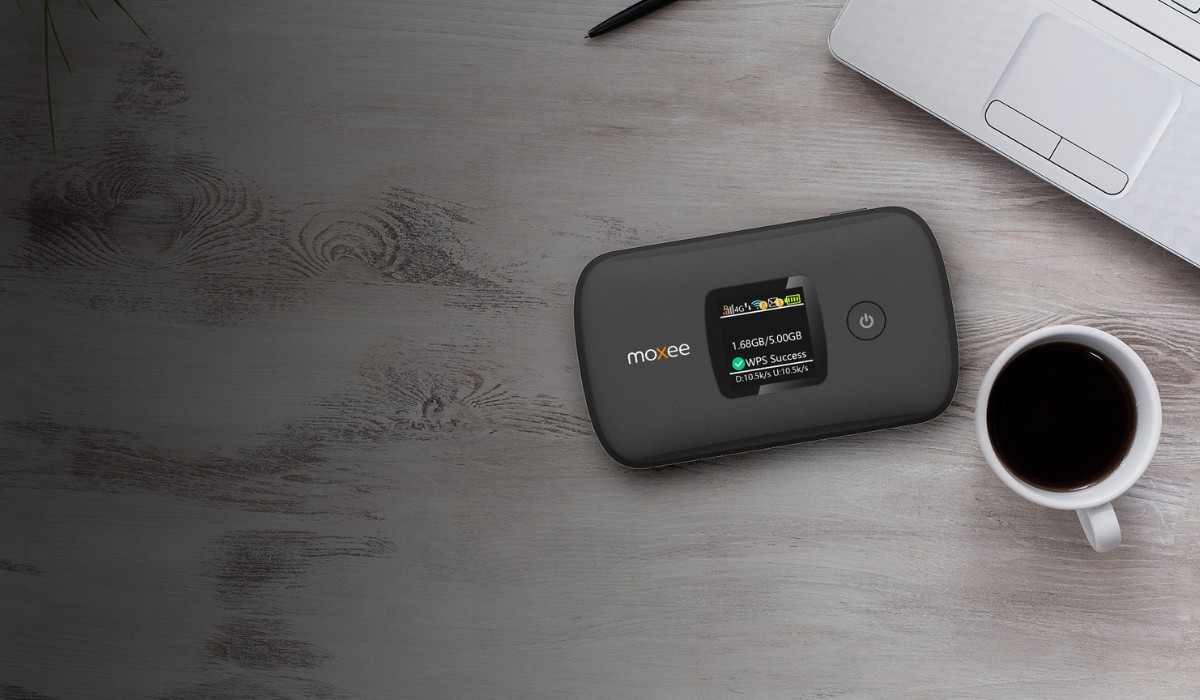Introduction
When it comes to staying connected on the go, a mobile hotspot is an invaluable tool. Whether you're working remotely, traveling, or simply in need of a reliable internet connection outside your home or office, a hotspot allows you to access the internet using cellular data. However, encountering issues with your hotspot can be frustrating and disruptive. This article will explore common troubleshooting steps to address the issue of a non-functioning hotspot and get you back online swiftly.
A malfunctioning hotspot can stem from various factors, such as network connectivity issues, software glitches, or interference. By systematically addressing these potential causes, you can effectively resolve the problem and restore your hotspot's functionality. Whether you're using your smartphone as a hotspot or a dedicated mobile hotspot device, the troubleshooting solutions covered in this article are designed to assist you in identifying and rectifying the issue.
In the following sections, we will delve into step-by-step troubleshooting methods, including checking network connections, restarting the hotspot, updating software, resetting network settings, and identifying potential sources of interference. By following these guidelines, you can navigate through the process of diagnosing and resolving hotspot issues with confidence.
So, if you're currently facing difficulties with your hotspot, fear not. This article is your guide to troubleshooting and resolving the issues that may be hindering your hotspot's functionality. Let's dive into the solutions and get your hotspot back up and running smoothly.
Check Network Connection
Ensuring a stable network connection is fundamental when troubleshooting a malfunctioning hotspot. Start by verifying the availability and strength of the cellular signal, as a weak signal can impede the hotspot's performance. If you're using a smartphone as a hotspot, check the signal bars or indicator on the device to gauge the signal strength. For dedicated hotspot devices, refer to the signal strength indicator on the device's display or interface.
If the signal strength appears weak, consider relocating to an area with better reception, such as near a window or in an open space. Additionally, if you're in a remote or rural area, the availability of cellular coverage may be limited, impacting the hotspot's functionality. In such cases, consider moving to a location with better network coverage to improve the signal strength.
Next, confirm that the cellular data service is active and operational on the device serving as the hotspot. This can be verified by checking the device's settings or contacting your mobile service provider. It's essential to ensure that your data plan is active and that there are no restrictions or limitations affecting the hotspot functionality.
In the case of a dedicated hotspot device, check the device's settings or interface to review the status of the cellular connection. Look for any error messages or indicators that may point to connectivity issues. If the device allows for manual network selection, consider reselecting the network to establish a fresh connection.
Furthermore, if you're using a smartphone as a hotspot, consider enabling and disabling the hotspot feature to reset the network connection. This simple action can sometimes resolve minor connectivity issues and re-establish a stable hotspot connection.
By meticulously examining and addressing the network connection, you can lay the groundwork for effective troubleshooting of your hotspot. Once you've confirmed a stable and robust network connection, you can proceed to the next steps in resolving the hotspot issue, confident in the knowledge that the network connectivity aspect has been thoroughly assessed and optimized.
Restart Hotspot
Restarting the hotspot is a straightforward yet remarkably effective troubleshooting step that can swiftly resolve a variety of connectivity issues. When a hotspot encounters glitches or malfunctions, a simple restart can often clear temporary errors, refresh the device's settings, and re-establish a stable connection. This uncomplicated solution is akin to pressing the reset button, offering a quick and efficient method to address common hotspot issues.
To initiate the restart process, begin by turning off the hotspot feature on the device. If you're using a smartphone as a hotspot, navigate to the device's settings or control center to locate the hotspot feature and toggle it off. For dedicated hotspot devices, refer to the device's interface or power button to power down the hotspot functionality.
After deactivating the hotspot, allow a brief interval of approximately 30 seconds before reactivating it. This short pause enables the device to fully power down and reset any temporary configurations or errors. Once the waiting period has elapsed, proceed to reactivate the hotspot feature on the device.
For smartphone hotspots, navigate back to the device's settings or control center to enable the hotspot feature. Similarly, for dedicated hotspot devices, refer to the device interface or power button to power up the hotspot functionality. As the hotspot reactivates, it will undergo a fresh initialization process, establishing a new connection and potentially resolving any underlying issues that were impeding its functionality.
Following the restart, it's advisable to verify the hotspot's performance by attempting to connect a secondary device, such as a laptop or tablet, to the hotspot network. This verification step ensures that the hotspot is operational and capable of providing internet access to connected devices. If the connection is successful and stable, it indicates that the restart has effectively rectified the issue, and the hotspot is once again functional.
By incorporating the restart process into your troubleshooting routine, you harness the power of a simple yet impactful solution to address hotspot malfunctions. This swift and uncomplicated action can often yield significant results, restoring the hotspot's functionality and enabling seamless connectivity for your devices. With the hotspot successfully restarted, you can proceed with confidence, knowing that you've leveraged an essential troubleshooting step to overcome connectivity challenges.
Update Software
Keeping the software of your hotspot device up to date is crucial for ensuring optimal performance and addressing potential issues that may arise from outdated firmware or operating systems. Software updates often include bug fixes, security enhancements, and performance optimizations, making them essential for maintaining the stability and functionality of your hotspot.
To begin the update process, access the settings or management interface of your hotspot device. For smartphone hotspots, navigate to the device's settings and locate the "Software Update" or "System Update" option. For dedicated hotspot devices, access the device's interface via a web browser or dedicated app to check for available updates.
Once in the software update section, initiate a manual check for updates. This action prompts the device to connect to the manufacturer's servers and search for any available firmware or software updates. If updates are available, follow the on-screen instructions to download and install the latest software version.
It's important to note that software updates for hotspots may require a stable internet connection, so ensure that the device has access to a reliable network during the update process. Additionally, some updates may necessitate a device restart to complete the installation, so be prepared for a brief interruption in the hotspot's functionality during this period.
After the update is successfully installed, take a moment to verify the hotspot's performance by connecting a secondary device and testing the internet connectivity. This validation step ensures that the updated software has effectively resolved any underlying issues and improved the hotspot's functionality.
In some cases, software updates may also introduce new features or enhancements that enhance the overall user experience. By staying current with software updates, you not only address potential issues but also benefit from the latest improvements and security patches provided by the manufacturer.
By proactively updating the software of your hotspot device, you demonstrate a commitment to maintaining its performance and reliability. This simple yet impactful maintenance task can significantly contribute to the seamless functionality of your hotspot, ensuring that it remains a dependable source of internet connectivity for your on-the-go needs.
Reset Network Settings
Resetting the network settings on your device can serve as a potent troubleshooting measure when grappling with persistent hotspot issues. This process involves reverting the network configurations to their default state, effectively wiping out any potential glitches or misconfigurations that may be impeding the hotspot's functionality. By undertaking this step, you initiate a fresh start for the network settings, potentially resolving underlying connectivity issues and restoring the hotspot to optimal performance.
To initiate the network settings reset, navigate to the device's settings menu and locate the "Reset" or "Network Reset" option. For smartphone hotspots, this can typically be found in the "General" or "System" settings section. For dedicated hotspot devices, the reset option may be accessible through the device's management interface or settings menu.
Upon selecting the network reset option, the device will prompt you to confirm the action due to its irreversible nature. It's vital to proceed with caution, as resetting the network settings will remove saved Wi-Fi networks, Bluetooth pairings, and cellular network configurations. Therefore, it's advisable to make a note of any essential network information or credentials before proceeding with the reset.
Once the reset is initiated, the device will undergo the process of reverting the network settings to their default state. This action effectively clears out any potential network-related issues, including misconfigured network preferences, corrupted network data, or conflicting settings that may be hindering the hotspot's performance.
Following the network settings reset, it's essential to reconfigure the hotspot feature if you're using a smartphone as the hotspot. Navigate back to the device's settings and enable the hotspot functionality, and proceed to set up the network name (SSID) and security settings as per your preferences.
For dedicated hotspot devices, you may need to re-establish the cellular connection and configure any custom network settings based on your specific requirements. Additionally, if the device allows for the customization of advanced network parameters, such as frequency bands or network modes, ensure that these settings are reconfigured to align with your usage scenario.
After completing the network settings reset and reconfiguring the hotspot, it's advisable to test the hotspot's functionality by connecting a secondary device and verifying the internet connectivity. This validation step ensures that the network settings reset has effectively resolved any underlying network-related issues, allowing the hotspot to operate seamlessly.
By undertaking the network settings reset, you harness the power of a comprehensive troubleshooting measure that targets potential network-related impediments to the hotspot's functionality. This proactive step can effectively clear out persistent connectivity issues, providing a fresh start for the network settings and reinstating the hotspot's reliability for your internet access needs.
Check for Interference
Interference from external sources can significantly impact the performance of a hotspot, leading to connectivity issues and reduced signal strength. Identifying and mitigating potential sources of interference is crucial in ensuring the seamless operation of your hotspot.
One common source of interference is physical obstructions, such as thick walls, metal structures, or dense foliage, that can obstruct the propagation of the cellular signal. When using a hotspot indoors, particularly in large buildings or structures with extensive metal framework, the signal may encounter obstacles that impede its reach. In such scenarios, relocating to a more open or elevated area can mitigate the impact of physical obstructions and improve the signal reception.
Electromagnetic interference from electronic devices and appliances can also disrupt the performance of a hotspot. Devices such as microwave ovens, cordless phones, and Bluetooth devices emit electromagnetic signals that can interfere with the cellular signal, leading to signal degradation and connectivity issues. To address this, it's advisable to maintain a reasonable distance between the hotspot device and potential sources of electromagnetic interference, thereby minimizing the impact of such interference on the hotspot's functionality.
Furthermore, network congestion in densely populated areas or at crowded events can contribute to interference, resulting in reduced data speeds and connectivity instability. During peak usage periods, cellular networks may experience congestion, leading to slower data transfer rates and potential connectivity interruptions for hotspot users. In such instances, consider adjusting the location or timing of hotspot usage to mitigate the impact of network congestion and ensure a more reliable connection.
Another factor to consider is the presence of nearby wireless networks operating on the same frequency bands as your hotspot. When multiple networks overlap in frequency usage, it can lead to interference and signal conflicts, impacting the performance of the hotspot. To address this, consider adjusting the frequency bands or channels used by the hotspot to minimize potential conflicts with neighboring networks and optimize signal clarity.
By proactively identifying and addressing potential sources of interference, you can optimize the performance of your hotspot and mitigate the impact of external factors on its functionality. Through strategic adjustments and environmental awareness, you can enhance the reliability and stability of your hotspot's connectivity, ensuring a seamless internet access experience for your on-the-go requirements.
Contact Support
If you've diligently followed the preceding troubleshooting steps and are still encountering persistent issues with your hotspot, it may be time to seek assistance from the support channels provided by the manufacturer or your mobile service provider. Contacting support can provide invaluable guidance, technical expertise, and personalized assistance tailored to your specific hotspot-related concerns.
When reaching out to support channels, it's advisable to have pertinent details readily available, such as the make and model of your hotspot device, the nature of the issues you're experiencing, and any relevant troubleshooting steps you've already undertaken. This information equips the support team with a comprehensive understanding of the situation, enabling them to offer targeted assistance and expedite the resolution process.
The support options available may include online chat support, dedicated support hotlines, email support, or in-person assistance at authorized service centers. Online chat support offers real-time interaction with support representatives, allowing for immediate troubleshooting guidance and solutions. Dedicated support hotlines provide direct access to knowledgeable support agents who can address your concerns and provide step-by-step assistance over the phone. Email support offers the convenience of asynchronous communication, allowing you to detail your concerns and receive tailored guidance via email correspondence. Additionally, authorized service centers provide in-person support and technical expertise for more complex hotspot-related issues.
When engaging with support representatives, it's beneficial to maintain a collaborative and communicative approach, clearly articulating the symptoms and challenges you're encountering with your hotspot. Be open to following additional troubleshooting steps or providing further information as requested by the support team, as this collaborative effort can expedite the diagnosis and resolution of the issues.
Furthermore, if the hotspot device is covered by a warranty or service agreement, the support team can assist in evaluating the eligibility for repairs or replacements, ensuring that you receive the appropriate level of support based on the device's warranty coverage.
By proactively engaging with support channels, you demonstrate a commitment to resolving the hotspot issues and leveraging the expertise and resources provided by the manufacturer or service provider. The support team's insights and technical guidance can offer a pathway to addressing complex or persistent hotspot issues, ultimately leading to the restoration of seamless connectivity and the optimal functionality of your hotspot device.

























